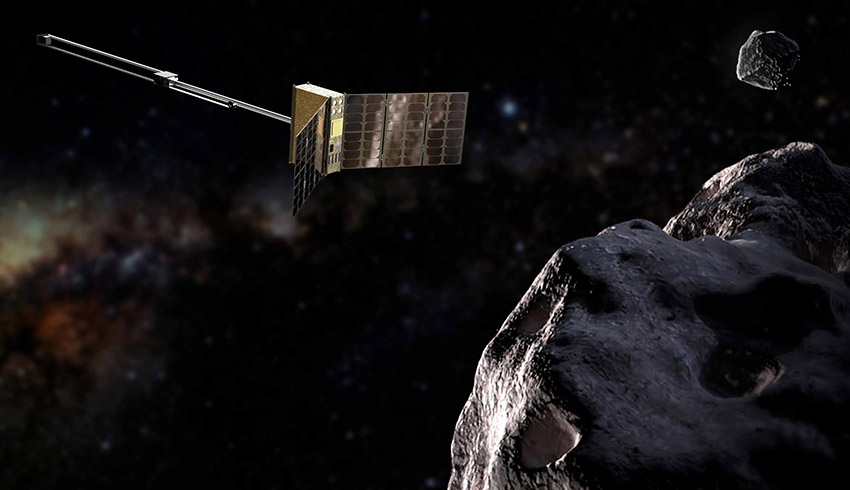ESA’s proposed Hera mission for planetary defence will explore the twin Didymos asteroids, but it will not go there alone: it will also serve as mothership for Europe’s first two ‘CubeSats’ into deep space.
CubeSats are nanosatellite-class missions based on standardised 10-cm boxes, making maximum use of commercial off the shelf systems. APEX, the Asteroid Prospection Explorer, will be a ‘6-unit’ CubeSat, selected to fly aboard Hera along with the similarly-sized Juventas, led by the Gomspace company.
APEX is being designed for ESA by a Swedish-Finnish-German-Czech consortium, representing a coming together of two CubeSat designs originally chosen to accompany Hera’s predecessor, the Asteroid Impact Mission.
Tomas Kohout of Helsinki University in Finland and the Czech Academy of Sciences said, "We’re a prospecting mission because we are focused on revealing the composition and structure of the Didymos asteroids."
"Our Asteroid Spectral Imager will perform detailed spectral measurements of both asteroids on a global basis. It will record the sunlight reflected by Didymos and break down its various colours to look for distinctive absorption ‘fingerprints’, to help map the surface makeup. We’ll obtain a full spectrum for each pixel we see, to make comparisons with terrestrial meteorite samples," Kohout added.
After a couple of weeks APEX would then close in on the smaller of the two asteroids, to close in within 500 metres of ‘Didymoon’. At this point the CubeSat will make use of localised Lagrange points, gravitationally stable points within the Didymos system.
During this ‘inner system science operations phase’ a third instrument would come into play: a magnetometer mounted on a boom away from the main CubeSat body, to maximise its sensitivity.
Jan-Erik Wahlund of the Swedish Institute of Space Physics explained, "At close proximity to Didymoon the magnetometer can separate the interplanetary solar wind from the magnetisation of the asteroid itself."
A dedicated navigation camera would help enable the precision flying required by these various mission phases, culminating in an asteroid touchdown. The Hera mission, including its twin CubeSats, will be presented to ESA’s Space19+ meeting this November, where Europe’s space ministers will take a final decision on flying the mission.

